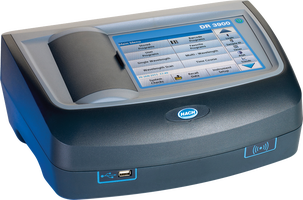-
English (US)
Choose your country or region:
Europe
Asia - Australasia
Middle East - Africa

Secondary treatment removes the soluble organic matter, nutrients such as nitrogen and phosphorus and most of the suspended solids that escape primary treatment.
Biological Secondary Treatment Processes
Most often, biological processes are used in which microbes metabolize organic compounds and nutrients to grow and reproduce. There are two common biological secondary treatment processes:

Suspended Growth Systems
A suspended growth process fosters the growth of suspended microorganism flocs from individual organisms already present in the wastewater and in the return activated sludge.
The flocs contain organisms that can remove the pollutants through aerobic, anoxic and anaerobic environments. Once the pollutants are removed, the flocs are sent to a secondary clarification process where they separate from the water via gravity. A portion of sludge in the bottom of the secondary clarifier is then directed back upstream to blend with the primary effluent (Return Activated Sludge) to create mixed liquor. The remainder of the sludge is removed from the process (Waste Activated Sludge) to create the ideal ecology of microorganisms.
Attached Growth Systems
Attached growth systems rely on the microorganisms to attach to a media and create a biofilm. The settled sewage is either mixed or sprinkled over the biofilm coated media where the microorganisms remove the pollutants. Like the suspended growth process, biofilm fragments and suspended flocs are sent to a secondary clarifier for separation where sludge is recycled and wasted and clean water is discharged to the next process.
See which of our spectrophotometers is best for your specific application and methods.


For biological treatment to function efficiently, organisms require nutrients in a balanced ratio, including:
Additionally, the following elements are typically present in wastewater:
The commonly accepted C:N:P Ratio is 100:5:1, although some facilities thrive outside of this ratio, while others experience polysaccharide slime formation or filamentous bacteria growth that inhibit the biology and settling in the secondary clarifier.
Multiple biological processes can be employed to complete secondary treatment. These processes include:
Interested in Hach®'s solutions for wastewater aeration?
Learn MoreBiological Nutrient Removal (BNR)
Biological Nutrient Removal (BNR) alters the environment of the microorganisms to remove nitrogen and phosphorus from the water. A BNR process consists of anaerobic (no oxygen or nitrate), anoxic (no oxygen, nitrate is present) and aerobic (oxygen present) stages, during which the water is moved through a series of chambers to perform various biological functions.
Chemical treatment processes can also be used, such as the chemical removal of phosphorus. By introducing a chemical precipitant within the aeration basin and clarifiers, phosphorus is removed by flocculation, binding into insoluble compounds that settle out and can be removed as sludge.
 LDO sc Probes
LDO sc Probes
The Luminescent Dissolved Oxygen (LDO) sc, Model 2 offers accurate monitoring of dissolved oxygen in source water and for precise aeration process control.
Shop Now Phosphate Analyzers
Phosphate Analyzers
The Phosphax sc Phosphate Analyzers provides a wide measurement range for a variety of wastewater and drinking water applications.
Shop Now
HQ Portable Meters
A robust and intuitive range of portable meters, HQ Series instilling confidence in reporting and managing your water quality results.
Shop Now
DR3900 Spectrophotometer
The DR3900 is designed to deliver accurate results quickly with Hach's innovative TNTplus® and LCK reagents for fast preparation and easy execution.
Shop NowContact us for tech support, service, sales, or to get a quote.